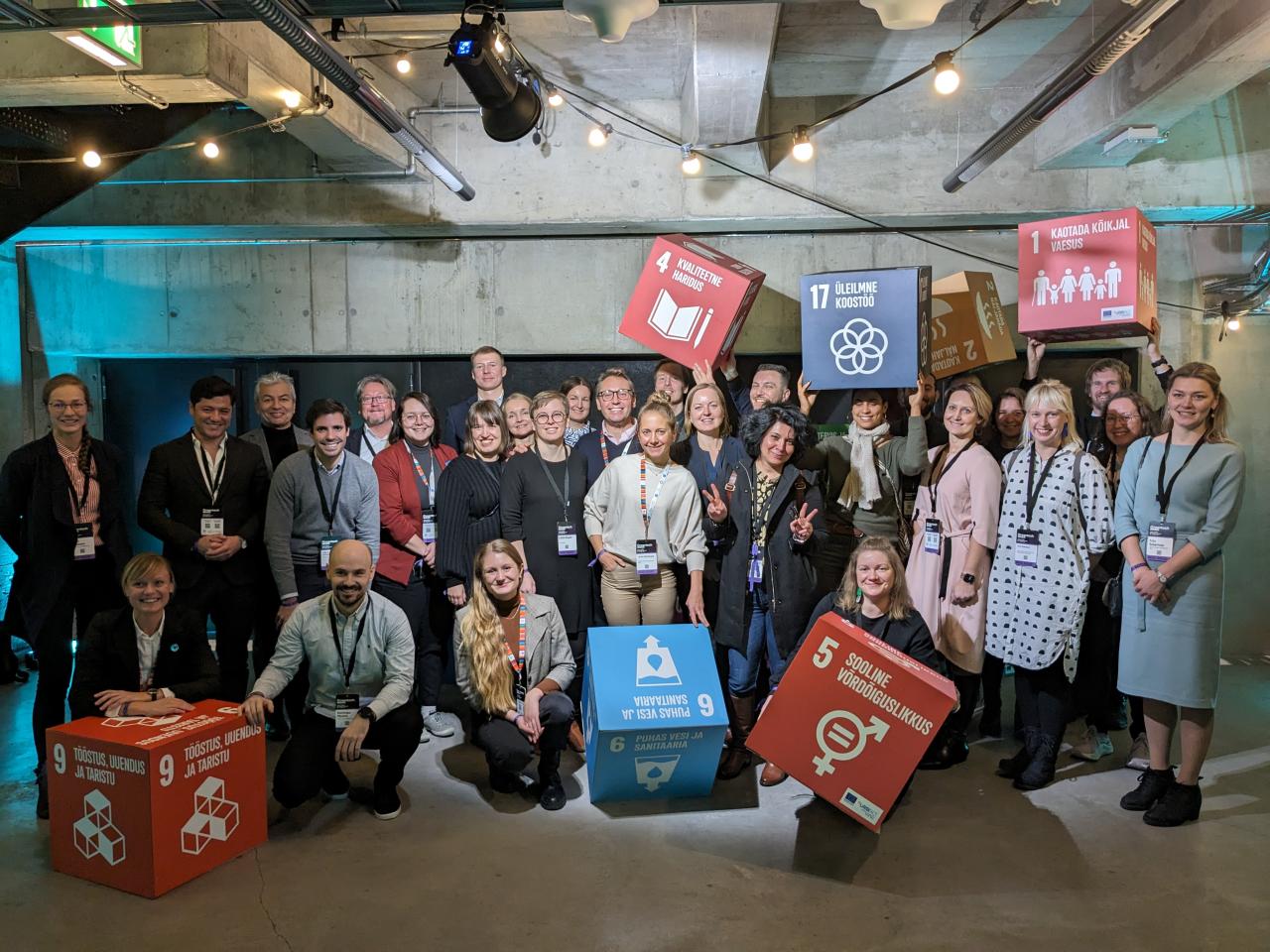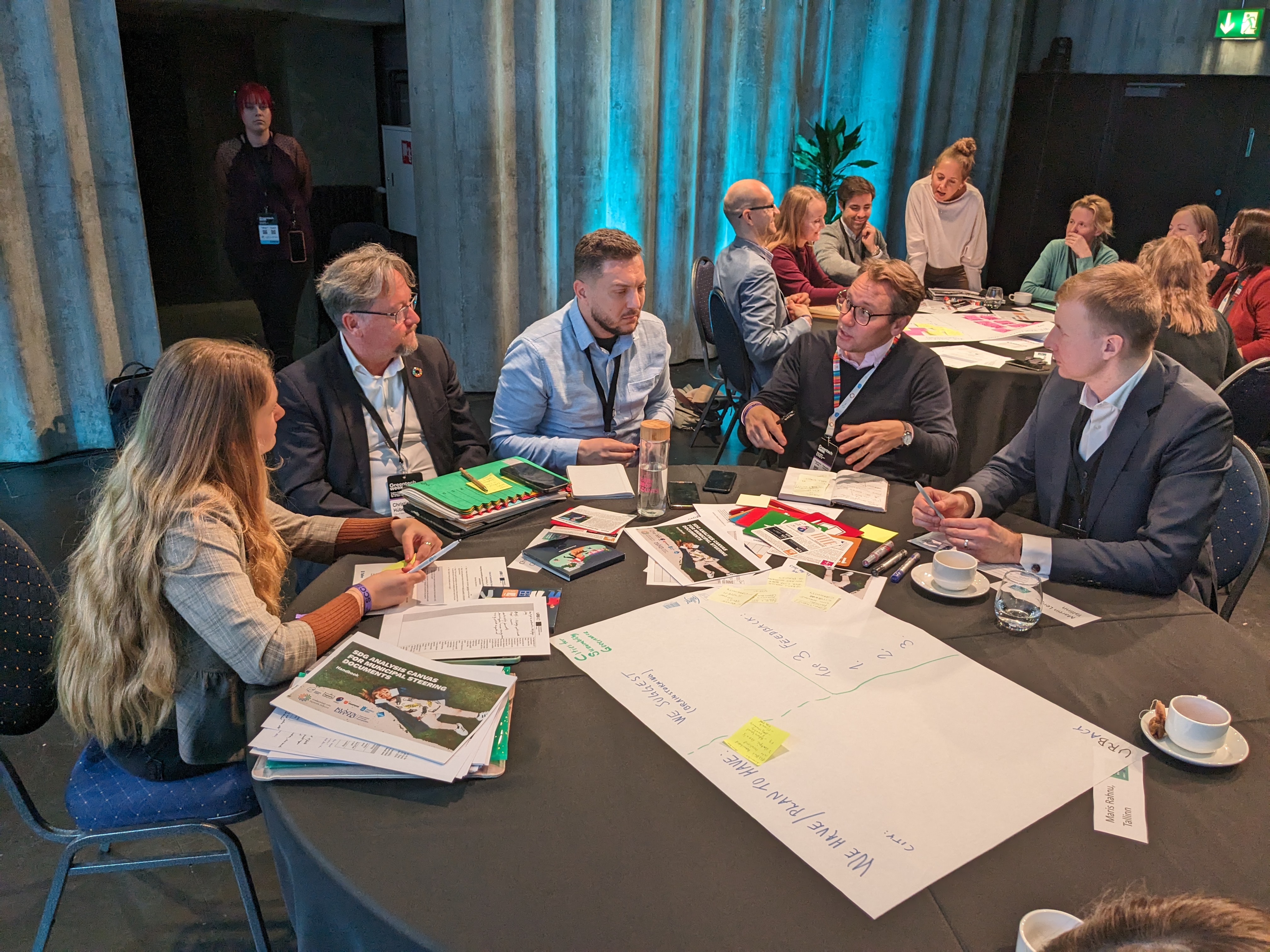Why 'sustainability governance'?
Few people are likely to have missed that the world is off track to achieve the UN Sustainable Development Goals (SDGs). The 2023 Special Edition SDG Progress Report released earlier this year states that “it’s time to sound the alarm”. With regard to cities (SDG 11), according to 2022 data from 1507 cities in 126 countries, only 51.6% of the world’s urban population has convenient access to public transport, and open public spaces account for a small 3.2% of urban land (on average globally), despite its proven importance for well-being during the Covid-19 pandemic. At the same time, rising social inequalities and climate change are increasing threats to SDG fulfilment.
No European city has yet achieved the goals, while the OECD estimates that around 65% of all SDG targets depend on actions by local and regional governments. So why is progress not happening fast enough?
Solving this ‘action gap’ requires new models for how we govern sustainability and deliver results for and together with our communities.
If the “end game” are well-governed, sustainable and healthy cities, the SDGs provide both the North star and the vehicle to get there. It is the best holistic framework for sustainable development at hand. It is a value-based agreement, a declaration, a set of 17 holistic themes, 169 targets, and over 200 indicators to measure them. Perhaps most importantly, it is a shared glocal (global + local) vocabulary to communicate to and with our communities. Not forgetting that it is shared by all world leaders, including all UN member states.
The Mayor of Braga, Ricardo Rio, puts it simply:
“I always say that the SDGs are our ‘way to quality of life’, so that when we are fulfilling the goals, we are trying to create conditions for people to be happier in our city and to have better quality of life”.
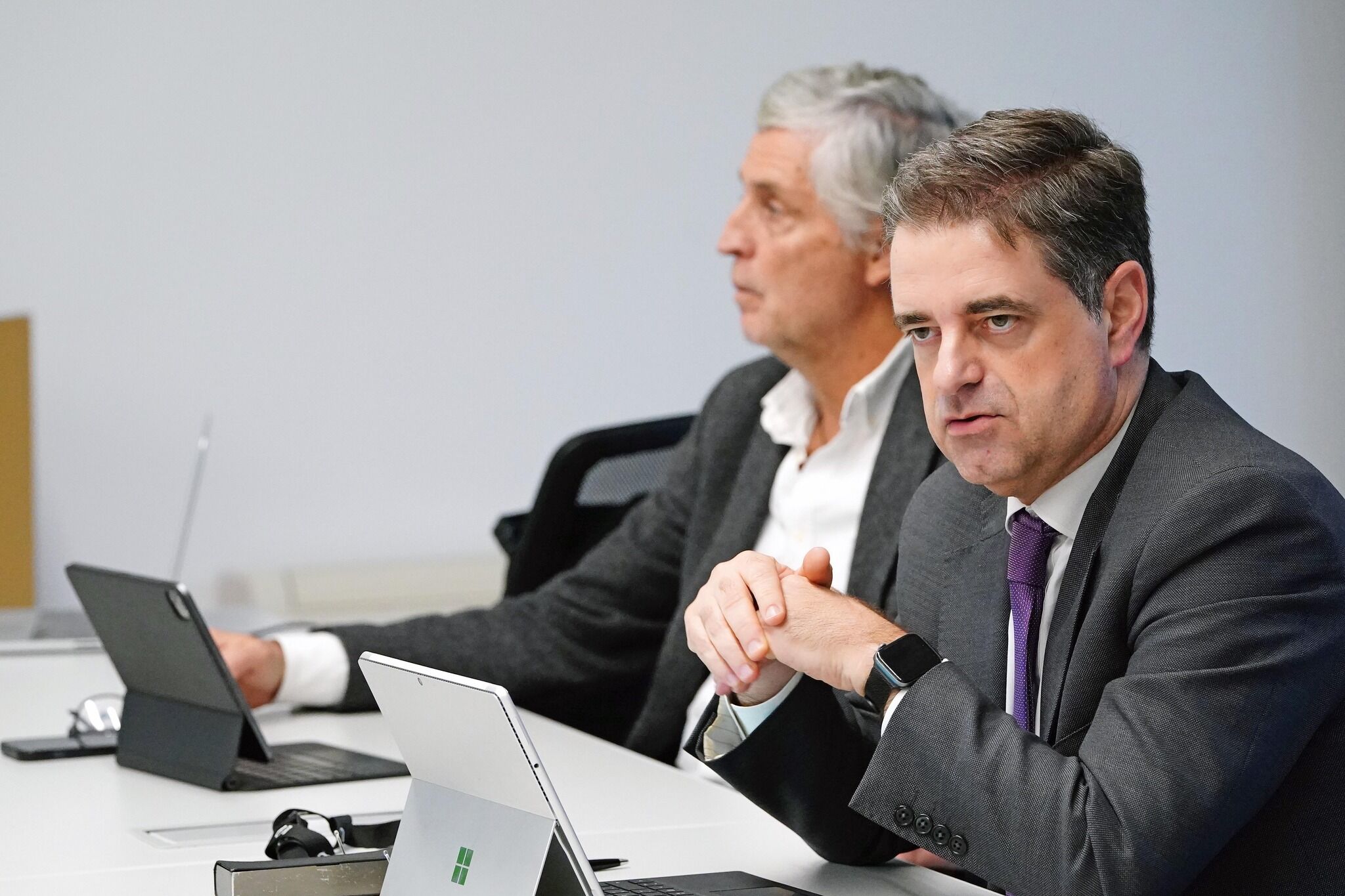
So if sustainability is defined by the UN 2030 Agenda and SDGs, what do we mean by “governance”? In short, governance deals with the question of how cities can deliver better results (towards SDGs), together with and for their communities. It focuses both on internal processes and structures and on relationships with stakeholders. In the next section, we show how the nine cities in the CSG network plan to tackle the topic through four main pillars.
Four pillars of sustainability governance
Acknowledging that each city has its unique local context and challenges, we have come up with four common pillars to analyse the CSG partner cities’ current situation with regards to sustainability governance. Based on these pillars, each partner will design and implement their priorities and actions.
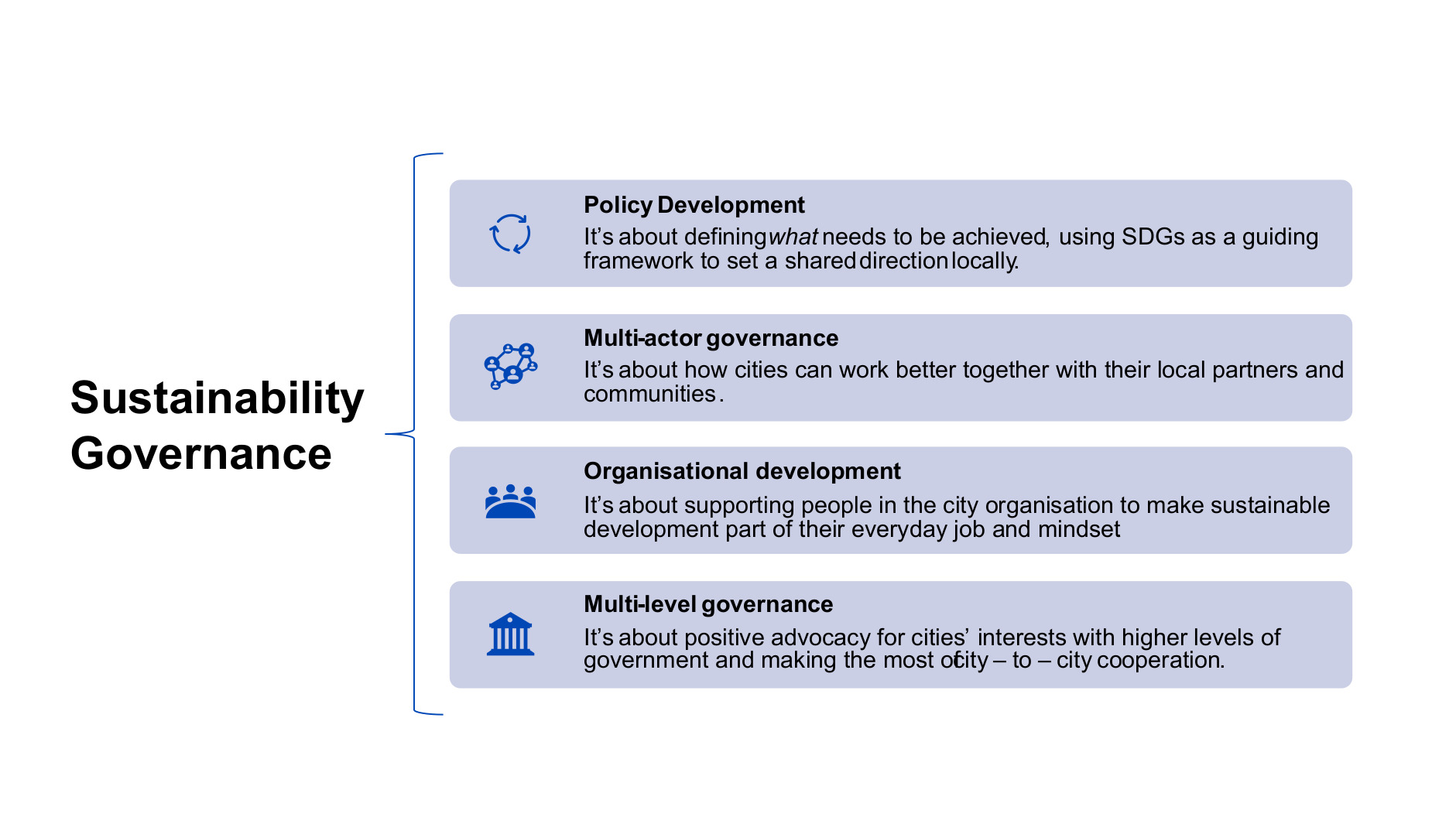
In summary, the four pillars deal with creating a shared direction locally, improving how cities work with partners and communities, building strong institutions with sustainability culture and mindset, and improving dialogue and cooperation across government levels.
Everything starts with creating a shared direction locally. In CSG, we promote using the SDGs to create shared visions and holistic long-term strategies that meet local needs and challenges. Some partners are already frontrunners on this topic: Espoo with the “Espoo Story”, Mannheim with its 2030 Mission, Braga’s strategic management model, and Tallinn’s 2035 development strategy – all of them integrate the SDGs into their design, execution, and monitoring. Other cities in the network have the opportunity to start making more strategic use of SDGs. This is happening in Kosice, and in Jablonec nad Nisou there is a new department created for strategic planning that will work to improve how strategic concepts and plans are developed. The SDGs can be of great support here.
Ø We call this pillar “Policy Development”. It’s about defining what needs to be achieved, using SDGs as a guiding framework to create a shared direction locally.
Working better together in partnerships and with the community is key. “If your work is not engaging citizens, it’s not happening”. This was one of the key messages from the mayors interviewed in the first phase of the CSG project. It helped us to understand that we need to focus on ways to engage local communities and citizens in the everyday work of cities and to do that in a network of cities This catalyzes learning and saves resources as well. Working better together also means using the growing combination of Ps - Private-Public-People-Place-Partnerships - to deliver sustainable development. València is a lighthouse on this, having designed a multi-layered governance system for its Climate Mission. It starts from a cross-department team and multi-stakeholder board, to building an open, city-wide alliance. The next challenge will be to ensure co-implementation of actions through these structures. Similarly to Valencia, both cities of Gabrovo and Kosice are setting up participatory governance systems for their climate missions. In Agios Dimitrios, a new participatory planning process is about to start with a new government taking office in 2024, drawing on a long tradition of community engagement.
Ø We call this pillar “Multi-actor governance”. It’s about how cities can work better together with partners and communities.
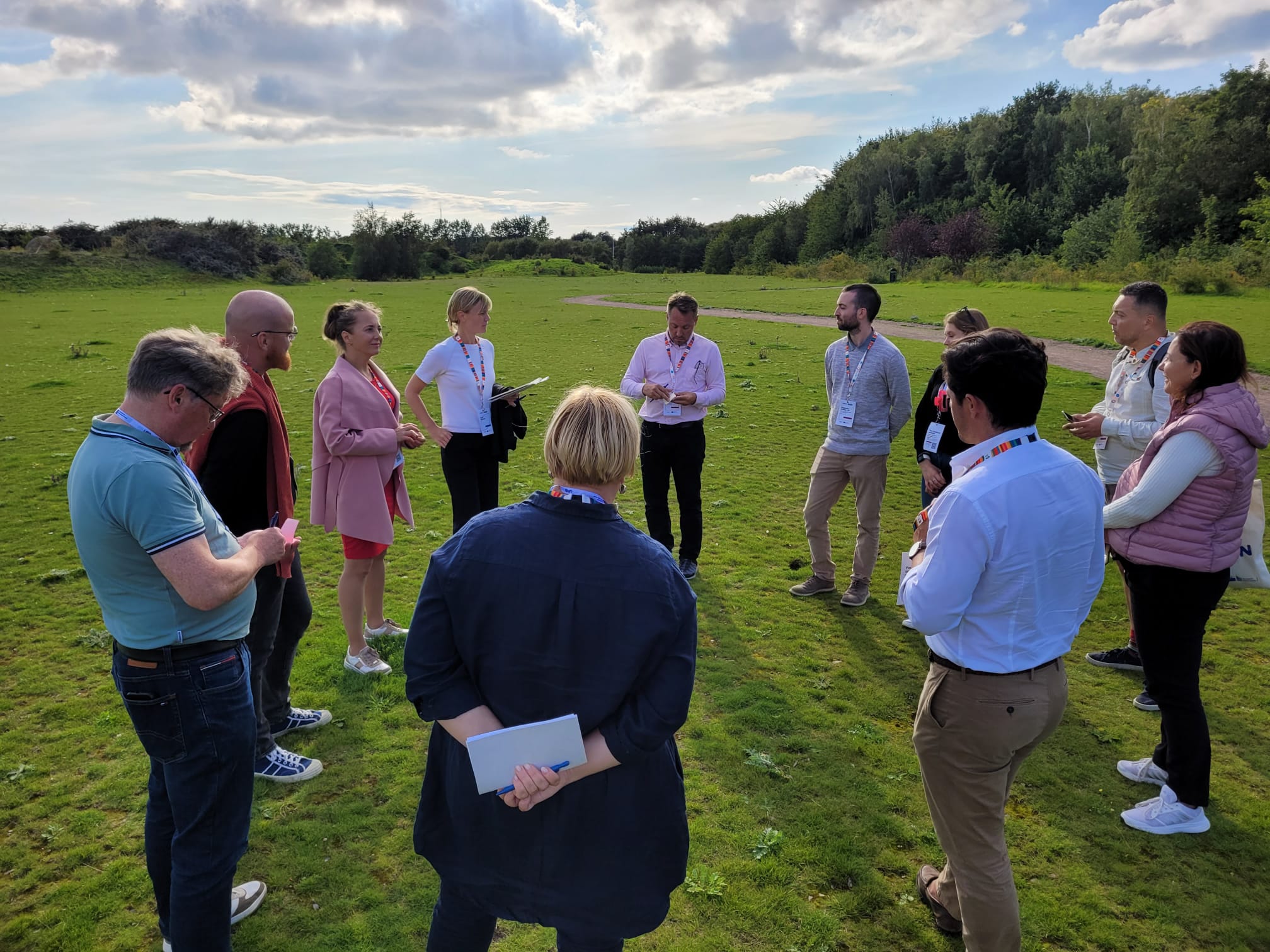
Strong institutions with sustainability culture and mindset are needed. City administrations and civil servants are at the heart of the CSG network, working hard to make sure that sustainable development is delivered in the best way possible using available resources. However, when we analysed the key problems behind the SDGs ‘action gap’ using URBACT's problem tree tool, the lack of “sustainability mindset” was highlighted as one of the root causes behind CSG’s main challenge. Equipping people with knowledge and understanding about sustainable development (and SDGs) is therefore key. What’s also needed is to make sustainable development part of everyone’s daily job, creating the right structures and routines – including resources – for departments to work together and for "silos to dance". In Tallinn, the Human Resources, Communication and International Relations departments are starting to work together to develop new course materials and internal communication actions to foster sustainability culture and mindset in the city administration. In Espoo, all city staff can already access an online course on SDGs, among other sustainable development trainings.
Ø We call this pillar “organisational development”. It’s about supporting people in the city organisations to make sustainable development part of their everyday job and mindset.
No city is an island, and sustainable development cannot be limited to administrative borders. That is why dialogue and cooperation across government levels (regional, national, EU, UN), as well as with other municipalities, is essential. As CSG, we want to connect with other networks and governance bodies, especially in the context of EU urban policy. We also want to make sure that the benefits of city-to-city cooperation bring concrete results at the local level. In Braga and Gabrovo, the Mayors are essential and dynamic advocates at EU-level through the Committee of Regions (CoR), and can support the whole network in understanding how to better link up local, national and international work. Braga's participation in the UN-Habitat global initiative for cities, and Gabrovo’s Innovation Camp following the CoR quadruple helix model, are two concrete examples.
Ø We call this pillar “multi-level governance”. It’s about positive advocacy for cities’ interests with higher levels of government and making the most of city-to-city cooperation.
Making cities count in creating the future of Europe
The role of cities in creating future-proof societies is widely acknowledged. No one is saying that cities are not responsible for actualizing sustainable development in practice and creating the basis for people's quality of life. The problem is that while cities are doing the work, they are not always listened to, mandated and resourced properly to deal with the expectations put on them. In the EU itself, one could compare cities to (sometimes rebellious) teenagers with adult responsibilities, being treated as children when important decisions are made. Cities for Sustainability Governance will prove that cities can design, implement, and operate strategic and community-driven solutions to sustainability challenges in all its dimensions: economic, environmental, and social. But to close the SDG action gap, they need to be at the table together with decision-makers at all levels.
Finally, "Sustainability Governance" for cities is not a one-size-fits-all concept - it will take different shapes according to the size, history, and geographical, socio-economic and cultural realities of our partner cities. We also know that timing is key, and that persistent efforts are needed to make sustainable development "stick" in an organisation. Experience has shown that the UN 2030 Agenda and SDGs can be contextualised, localised and guide the way for cities of all types and sizes. In essence, the challenges Europe is facing call for new ways to support representative democracy in an ever more complex environments. Cities for Sustainability Governance will validate at least one element in this quest: community-driven and strategic governance through the 2030 Agenda and SDGs.
Many thanks to Ville Taajamaa, CSG Lead Partner coordinator, for the contributions to the article.

